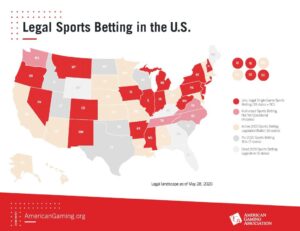EPSDT Aging – Part VII: Taking Responsibility
In the last six posts, we’ve talked a lot about all the factors involved in the transition from a child with special needs (covered by the Early and Periodic Screening, Diagnosis, and Treatment (EPSDT) program) to an adult. with special needs a particularly traumatic event for low-income families. We’ve talked about the states that rejected the Medicaid expansion offered by Obamacare and about the flaws within Medicaid that cause the unexpanded version to fail so many low-income adults with disabilities. We have discussed the costs this can have for families who have to pay out of pocket for their newly-adult children with disabilities.
What we haven’t talked about is how much all these failures are costing us. Not just in some sort of moral outrage, either, but in terms of real tax money in our pockets.
Emergency treatment is a right…
Emergency medical treatment became a universal right in the United States in 1986: If someone, insured or not, presents to a hospital emergency room with a life-threatening emergency, the emergency room is legally obligated to treat you until their lives are no longer in danger. endangered. If that person has no insurance, no money, and the hospital can’t convince Medicaid that they should have coverage, the hospital uses a perfectly valid and legitimate technique called ‘repricing’ to essentially bill Medicaid anyway, charging a little more for all the other Medicaid covered services they offer.
… that we all pay
It sounds like it could be a no-loss situation for the taxpayer, but that couldn’t be further from the truth, and here’s why: Medical emergencies cost an unbelievably higher amount than medical maintenance. The cost of keeping a person with severe asthma on a powerful inhaler can run to several thousand dollars each year, plus another $12,000 for a couple of interventions. The cost of resuscitating, medicating, observing and ultimately discharging someone whose severe untreated asthma led her sister to call 911 and seek out paramedics will easily exceed $100,000.
And that’s just for one of those events. Many relatively common forms of disability, including severe asthma, often send their patients to the hospital several times a year when they are not receiving treatment. Therefore, the cost of covering one of these families with Medicaid would be perhaps $20,000, and the cost of not covering one of these families can easily exceed $520,000. When you multiply the difference of half a million dollars by an estimated 25,000 Americans who have severe disabilities and are not covered by Medicaid or any other insurance, all of a sudden we see $12.5 billion that American taxpayers are paying so that some states can they pat themselves on the back for ‘cutting costs’ by cutting coverage for young adults over the age of the EPDST program.
What to do fiscally responsible
A decade or so ago, ‘rogue investigator’ Malcolm Gladwell wrote an article in the New York Times called Million Dollar Murray, in which he described how a specific homeless man cost the city of Las Vegas over a million dollars in hospital costs over a 10-year period. . Since that article, various entities have recognized the value of simply paying for people who cannot pay for themselves. The state of Utah’s Housing First program, for example, simply hands out small but complete houses to the chronically homeless, charging them a meager rent of $50 a month. Why? Because one study showed that a chronically homeless person costs the state an average of $19,000/year in jail, hospital, and other services, but it only costs $8,000/year to house and assign a caseworker.
There are hundreds of similar examples across the country: cities, counties, and sometimes entire states realizing that simply providing a service to the people who need it most is the genuinely fiscally responsible long-term option. And while you might be able to make a seemingly pretty strong argument about startup and recovery when it comes to homelessness or drug use, it’s a pretty strong bet that you really can’t ask someone with a chronic disability to ‘man. up’ and handle it on your own, making you not only fiscally responsible, but also morally responsible.


